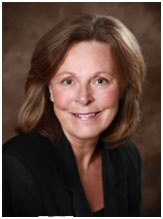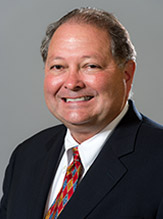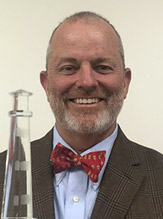 Attracting, gaining Supply Chain recognition shouldn’t be a novelty
Attracting, gaining Supply Chain recognition shouldn’t be a novelty
By Rick Dana Barlow
Author Joseph Heller coined the iconic phrase “Catch-22” in 1961 as part of his satirical novel of the same name set during World War II. Many know some form of the phrase’s definition.
Merriam-Webster’s dictionary lists it as “a problematic situation for which the only solution is denied by a circumstance inherent in the problem or by a rule.” The M-W text goes on to cite the quotation, “show-business catch-22 – no work unless you have an agent, no agent unless you’ve worked,” attributed to Mary Murphy, an American film and television actress during the 1950s through the 1970s.
The novel phrase would enter the printed national lexicon in 1963, about two years after Heller’s book debuted, according to M-W.
Healthcare supply chain executives and leaders maintain their own version of a Catch-22. Several years ago, during Bellwether League’s Healthcare Supply Chain Leadership Forum, a supply chain executive panelist quipped that the best time is when no one’s calling to complain about something you did or didn’t do. Of course, he followed that up by clarifying that it doesn’t mean you’re necessarily doing everything right either.
This leads to the Catch-22 moment: If no one complains about what you’re doing wrong, they’re likely not aware of what you’re doing right either. They may be clueless – or careless – about the value Supply Chain brings to the organization – particularly the C-suite.
Look to the famous quote from The Captain in the 1967 film, “Cool Hand Luke” for an inkling to the potential problem: “What we’ve got here is failure to communicate.”

Tim Bugg
Tim Bugg, President and CEO, Capstone Health Alliance, Silver Sustaining Sponsor, issues his own bon mot from pop culture.
“Benny Hill also said, ‘Just because no one complains, doesn’t mean all parachutes are perfect!’ So yes, this is a catch 22 question, but supply chain value can only be expressed by supply chain professionals,” Bugg told Leaders & Luminaries. “Though the trend has been slow, we are seeing supply chain elevated to a top C-suite profession. As an industry we must continue this advancement. As both quotes suggest, we must continue the good work and we must continue to tell the story. C-suites should understand the value a supply chain executive brings to the facility, and our industry needs to carry that flag. The importance of the supply chain function can’t be overlooked, but we are our own best cheerleader and only we can frame our story in a meaningful way.”

Dee Donatelli
Dee Donatelli, Bellwether Class of 2015, and Vice President, Professional Services, symplr, agrees.
“Supply Chain must strive to be noticed, meaning we need to produce results that carry to the executive suites,” she said. “Rather than fighting for admission we need to prove our worth to participate. The way in which supply chain reports their success and contributions needs to lend itself to being invited to executive discussions and be worthy of demonstrating the impact being made towards greater affordability to the organizations and communities we serve.”
Questions abound about the C-suite’s ability to recognize and comprehend Supply Chain’s value to the organization and enterprise.

Carl Meyer
“How is your Supply Chain being measured by the C-suite?” asked Carl Meyer, Bellwether Class of 2019, Vice President, The Wetrich Group. “Are these metrics what really matter to measure the mission of providing the right product to the right place at the right time at the right price? If the measurements do not support the mission, then your actions and behaviors to address the metrics will run counter to the mission.
“There is an old adage that no one will ever toot your horn,” Meyer continued. “It is my belief that the C-suite does not understand Supply Chain and the value it can provide nor [does it] have any basis to develop the metrics. As such, it is my belief that Supply Chain needs to educate the C-suite on what they do and what metrics matter to the C-suite.”
Others point to transparency and visibility as well as data mastery as clear indicators of successful recognition.
“Data and performance reporting transparency are really keys to guarantee that the users of the supply chain truly understand the output of services offered,” said Tom Lubotsky, Vice President, Supply Chain, Allina Health, Bronze Sustaining Sponsor. “Creating well-developed service level agreements (SLAs) that outline key performance measures, definitions, and reporting cadency truly are the means by which these understandings can be fully promised. SLAs should be developed for all key functions of the supply chain, such as Logistics, Sourcing, Procure to Pay, Asset Performance.”

Jim Francis
Jim Francis, Bellwether Class of 2017, Chair, Supply Chain Management, Mayo Clinic, Bronze Sustaining Sponsor, emphasizes a sense of leadership and unity during a crisis as essential tenets for supply chain recognition.
“I personally believe the best time for healthcare supply chain management is during a period of difficulty, such as challenging financial times for an organization,” Francis noted. “In these situations, the entire organization pulls together and focuses on the most important aspects of change necessary to improve performance. Supply chain management has an opportunity to shine and deliver great value with support at all levels of the organization.
“In terms of guaranteeing a ‘win,’ whether in good times or bad, complaints or no complaints, you have to continuously communicate and educate what supply chain management does for the organization,” he continued. “A variety of tactics can be used, including monthly financial and supply chain scorecards, value created, an annual report and service level agreements where you can set expectations and report on how you delivered to those expectations, etc.”

Rand Ballard
Sometimes a holistic perspective may be what’s needed, according to Rand Ballard, Chief Customer Officer, Vizient Inc., Founding Sustaining Sponsor.
“In order to ‘guarantee the win,’ you must master the day-to-day activities each year, fulfill the service level needs and continue to drive down costs,” Ballard noted. “Having said that, with the total cost reductions needed going forward, I don’t think people will overlook the supply chain, if it is doing a good job, because it is critical. In fact, as a supply chain becomes clinically integrated, supply chain leaders’ performance and output will become even more visible in the organization.”
But others argue that having everything working as smoothly as possible should generate rewarding recognition on its own merits.

Shaun Clinton
“I firmly believe that the best supply chains are both transparent and invisible,” insisted Shaun Clinton, Senior Vice President, Supply Chain, Texas Health Resources, Bronze Sustaining Sponsor. “I tell my team this all the time and I often share those thoughts with senior leaders of this organization. It is in this constant reminder that – hopefully – those that are judging are performance can base their measure of success.”

Ed Hardin
Keeping a scorecard makes a difference, according to Ed Hardin, Bellwether Class of 2020, who was interviewed by Leaders & Luminaries several months before his passing in January 2021. His words continue to resonate.
“I can think of no better way than to develop a balanced scorecard approach to measuring your performance and liberally publicizing that scorecard,” he indicated. “Do not be afraid of the many opportunities for improvement that will undoubtedly get the spotlight. If you are measuring the right things, then you will undoubtedly be exposed to such opportunities for improvement and the new accountabilities that will arise from calling out your performance will only serve to incentivize you and your staff as well as advocates. In time, you will become more relevant because you have made your supply chain’s performance transparent and likely one of the few departments that have.”